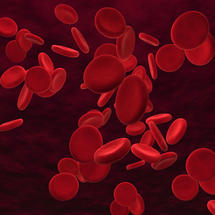FRESNO, Calif. (KFSN) — Fifty million Americans suffer from arthritis. That number is expected to grow to 67 million in the next 15 years. The pain is becoming so excruciating that record numbers are opting for hip, shoulder, and knee replacements. However, now you don’t have to go under the knife to find relief.
Watch this video to find out more.
Former State Representative John Lunsford gave speeches, shook hands, and pounded the pavement for eleven years in Georgia. It all took a toll on his body.
“I was taking about 16 ibuprofen a day and sometimes I’d take two naproxen in the morning and two at night,” John Lunsford said.
Lunsford was suffering from osteoarthritis. Doctors said his only solution was surgery.
“The first one told me I would need a total hip replacement. So, I went to get a second opinion, and he told me I needed a total hip replacement,” John said.
Then, he found the next evolution in regenerative medicine, using stem cells to target inflammatory and pain pathways.
“They change the pain pathway so it’s no longer as painful. They change the inflammatory pathways in that you don’t have as much inflammation being produced and in turn not as much pain,” R. Amadeus Mason, MD, Assistant Professor of Orthopedics at Emory Sports Medicine Center said.
Emory Orthopedic Specialists take the stem cells from a patient’s own bone marrow, process them, and inject them back into the patients’ joint, causing the pain to go away.
“We have also seen regeneration of cartilage,” Dr. Mason said.
Patients are able to walk or drive immediately after the procedure and should experience significant overall improvement within six weeks.
“The implant was a little intense for a few seconds, nothing you couldn’t deal with. It was a whole lot less painful than a root canal,” Lunsford said.
Out of 50 patients, only one needed surgery.
If you would like more information, please contact:
Lori Vasquez Clinical Assistant Emory Sports Medicine Center (404) 778-0209 [email protected] Reference: http://abclocal.go.com/kfsn/story?section=news/health/health_watch&id=9204169 (Copyright ©2013 KFSN-TV/DT. All Rights Reserved.)





